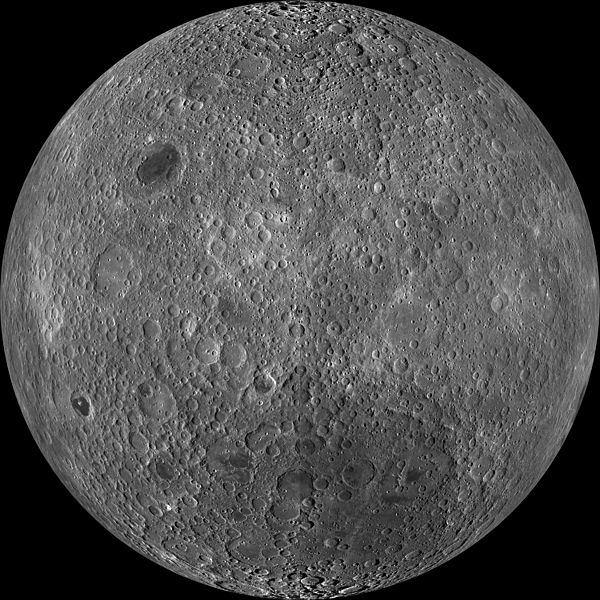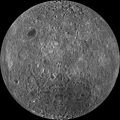Ragiv:Moon Farside LRO.jpg

Gretot dajona büfik at: 600 × 600 pixels. Votik(s) magodadensitöfs: 240 × 240 pixels • 480 × 480 pixels • 768 × 768 pixels • 1,024 × 1,024 pixels • 2,048 × 2,048 pixels • 18,000 × 18,000 pixels.
Ragiv rigik (18,000 × 18,000 pixel, ragivagret: 85.34 MB, pated MIME: image/jpeg)
Jenotem ragiva
Välolös däti/timi ad logön ragivi soäsä äbinon ün tim at.
| Dät/Tim | Magodil | Mafots | Geban | Küpet | |
|---|---|---|---|---|---|
| anuik | 23:47, 2014 mäzul 19id |  | 18,000 × 18,000 (85.34 MB) | Huntster | High resolution mosaic. |
| 04:12, 2011 prilul 9id |  | 1,600 × 1,600 (1.44 MB) | Bubba73 | {{Information |Description ={{en|1=Far side of the Moon, by NASA's Lunar Recon. Orbiter}} |Source =http://apod.nasa.gov/apod/image/1104/farside_lro1600.jpg |Author =NASA - LRO |Date =2011? |Permission = |other_versions = } |
Yüms
Pads nonik peyümons ad nüned at.
Ragivigeb Valöpik
Proyegs votik sököl di ‚wiki’ gebons nünedi at:
- Geb su af.wikipedia.org
- Geb su az.wikipedia.org
- Geb su be.wikipedia.org
- Geb su bjn.wikipedia.org
- Geb su bn.wikipedia.org
- Geb su bs.wikipedia.org
- Geb su ca.wikipedia.org
- Geb su cs.wikipedia.org
- Geb su de.wikipedia.org
- Geb su en.wikipedia.org
- Geb su en.wikibooks.org
- Geb su en.wikiversity.org
- Solar System, technical/Moon
- User:Marshallsumter/Radiation astronomy2/Visuals
- Draft:Original research/Planets
- User:Marshallsumter/Radiation astronomy2/Visuals/Quiz
- User:Marshallsumter/Rocks/Rocky objects/Astronomy
- User:Marshallsumter/Radiation astronomy/Courses/Principles/Hourly 2
- User:Marshallsumter/Radiation astronomy/Courses/Principles/Midterm quiz
- User:Marshallsumter/Radiation astronomy/Courses/Principles/Final quiz
- Titan/Quiz
- User:Marshallsumter/Rocks/Rocky objects
- Draft:Enceladus/Quiz
- Moon/Quiz
- Stars/Sun/Heliology/Quiz
- Earth/Quiz
- Stars/Reds/Quiz
- Draft:Dione/Quiz
- User:Marshallsumter/Radiation astronomy2/Scattered disks/Quiz
- User:Marshallsumter/Radiation astronomy1/Kuiper belts/Quiz
- Liquids/Liquid objects/Moon
- User:Marshallsumter/Radiation astronomy/Craters
- Geb su es.wikipedia.org
Jonön mödikumosi dö geb valemik nüneda at.

